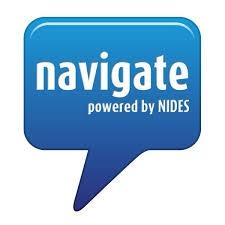Known for its advanced blended learning programs, Navigate NIDES, with the Comox Valley School District 71, embraces the use of technology in education to enhance learning at home and create meaningful connections between students, teachers, and their communities. Keep reading to see how partnering with Canvas has enabled this Canadian school district to advance its online learning initiatives and practices to meet the needs of every learner.
The Challenge
After using a former learning management system (LMS) for 15 years, teachers at Navigate felt their blended learning initiatives had well surpassed the capabilities of their learning systems. With a guiding value of making meaningful connections in online learning, teachers needed a scalable, reliable system that would allow them to establish consistency in course creation and professional development. Additionally, they needed a better way to facilitate teacher-parent communication to ensure students were getting the learning support they needed at home. With the need for a more intuitive, easy-to-use, and communicative platform, they implemented Canvas LMS in the spring of 2018.
The Solution
Using Canvas LMS, leaders and teachers were able to build a robust online learning ecosystem, making them well equipped for the changes brought on by the COVID-19 pandemic. Teachers at Navigate are relationship-focused and experience-driven, keeping teacher-student engagement at the center of all technology use. When asked what led them to choose Canvas LMS, the answer was simple: It’s easy to use, has an intuitive system, and simplifies the administrative aspects of teaching, allowing more time for what matters most—connecting with students.
Key Insights
Navigate-NIDES is a Distributed Learning school, allowing students and educators to participate in instruction while located in dierent, non-centralized locations.
Leaders at Navigate created guiding Canvas principles to facilitate online learning best practices in a way that focuses on the social and emotional needs of all learners.
Navigate uses Canvas Commons to streamline teacher collaboration and free up more time to interact with students.
Navigate relies on the following tools and features to support their community-first online learning model.
Blueprints + Commons: Teachers create blueprints of all course oerings and share them via Canvas Commons with faculty. Giving everyone a solid foundation to build from allowed for more time to get creative with interactive and engaging curriculum.
LTI Integrations + Audio/Video Feedback: To provide a connected online learning experience for students and teachers alike, instruction is delivered with video conferencing integrations that can be accessed directly from Canvas, making it a one-stop shop for teaching and learning. Additionally, personalized feedback is sent to students in the form of audio and video clips, enabling them to take ownership of their learning.
In online learning the content is the what, and the relationship is the why.
Marieke Holtcamp,
Vice Principal at NIDES Navigate
Overall, Canvas has served as a vehicle to drive the already innovative instruction model at Navigate, allowing teachers to customize teaching methods and students to build community connections.
“In online learning the content is the what, and the relationship is the why.”
-Marieke Holtcamp, Vice Principal at NIDES Navigate
The Results
After basic online learning needs were met with Canvas LMS, Navigate could take the next step: creating virtual learning settings that enhance social and emotional wellness. Building upon its commitment to strengthening teacher-student relationships, faculty created the “Pillars of Facilitation” that serve as district-wide best practices for online instruction using Canvas.
The Pillars of Facilitation comprises:
- Presence: Create a lively welcome video, provide feedback in audio or video, and offer synchronous meetings for those who need them.
- Empathy: Check in with students individually, support students continuously, and find opportunities to connect.
- Awareness: Build in formative feedback loops, get to know students to establish and foster relationships.
“I tell new teachers that when students click on your Canvas course, it’s the equivalent of them walking into your classroom. With that in mind, how can you make your virtual classroom as welcoming as possible?”
-Marieke Holtcamp, Vice Principal at NIDES Navigate
With growing interest from district leaders to put all courses in Canvas, the next step in their journey is to expand online course offerings, a progression they never imagined with their former learning management systems.
Teachers are following suit by using Canvas to engage with even the youngest learners in K–3 grades. This new approach will allow them to strengthen usage from primary to secondary grade levels and improve teacher-parent communication every step of the way.
“One of my favorite things about Canvas is the Parent Connect App. We hope to roll this out to all of our new DL (Distributed Learning) parents late next month. A student's work can be invisible to a parent, and this app invites them to be integrally involved.”
-Jeff Taylor, K12 Principal at Navigate-NIDES
The team is also seeing tremendous growth due to the continuation of students choosing online education in response to the ongoing pandemic. This increase in enrollment has presented a growing need for onboarding and training new teachers. To meet this need, Navigate is using Canvas to facilitate professional development sessions on the use of specific Canvas tools and features. This ongoing investment in PD has helped the school system to develop a “train the trainer” model, empowering teachers to harness their Canvas expertise to train other teachers in their grade level.
We want each school to have its own Canvas expert that teachers can turn to for support.
Marieke Holtcamp,
Vice Principal at NIDES Navigate
Download Case Study
